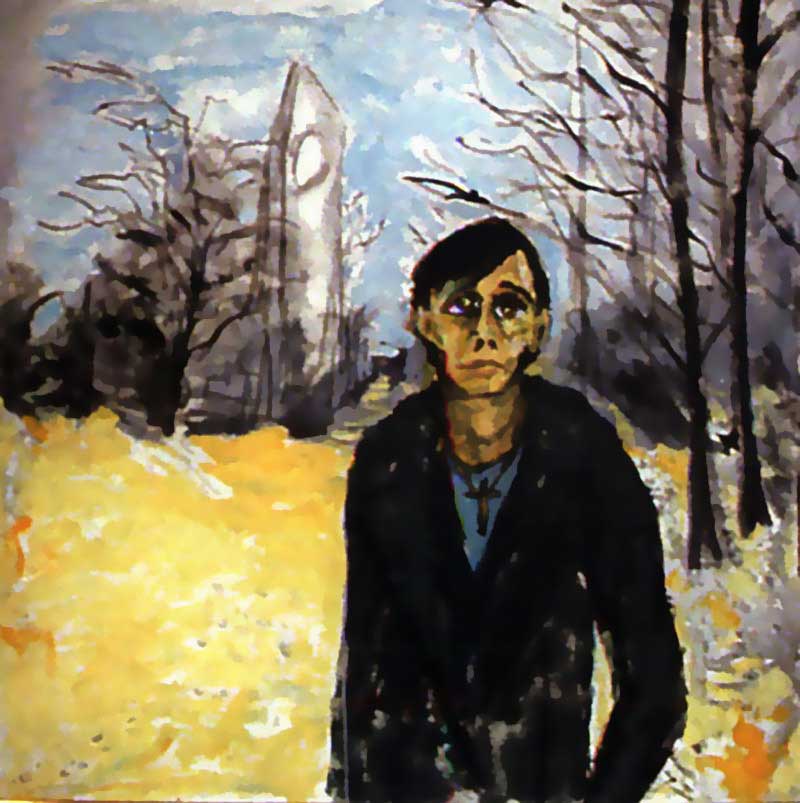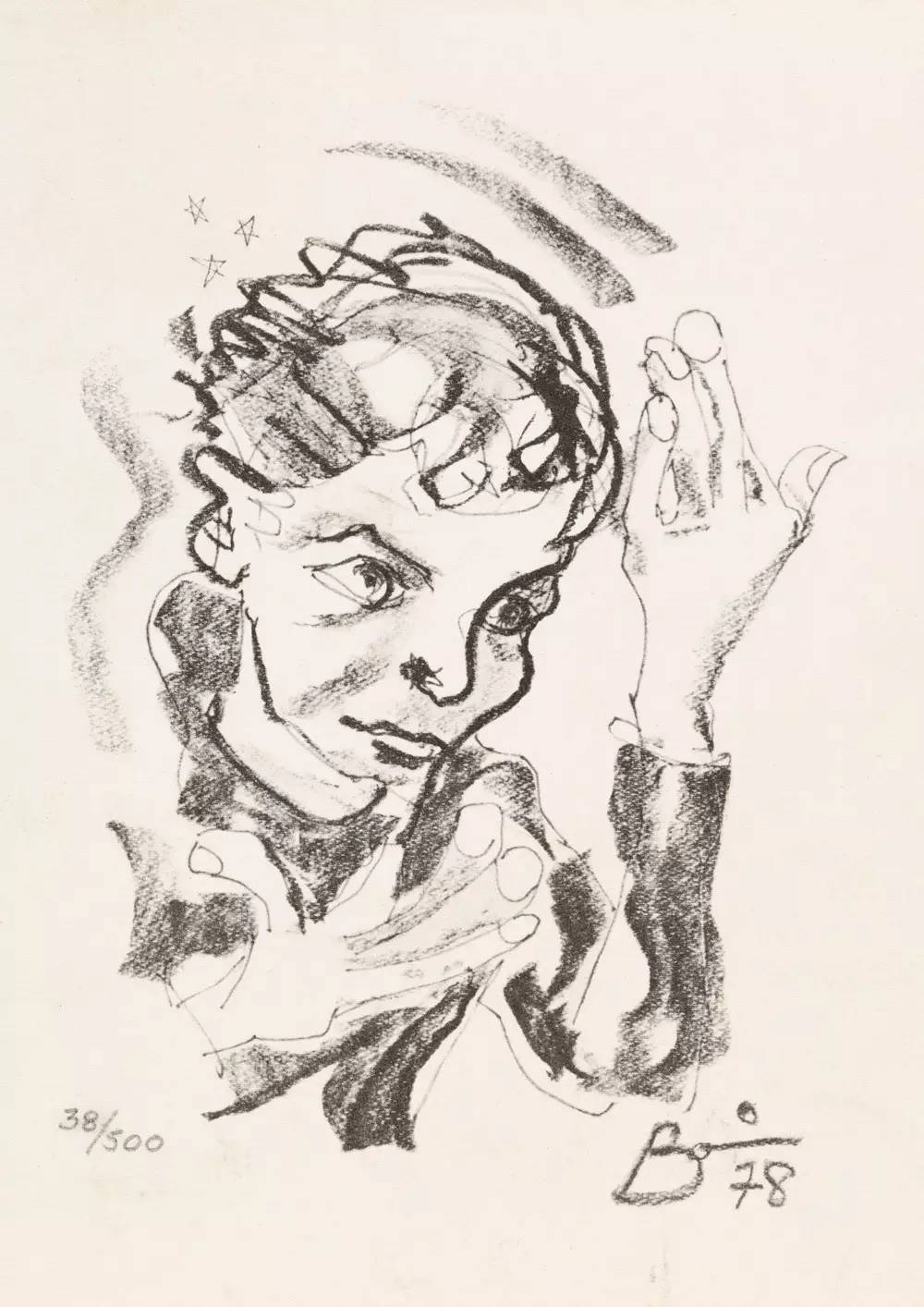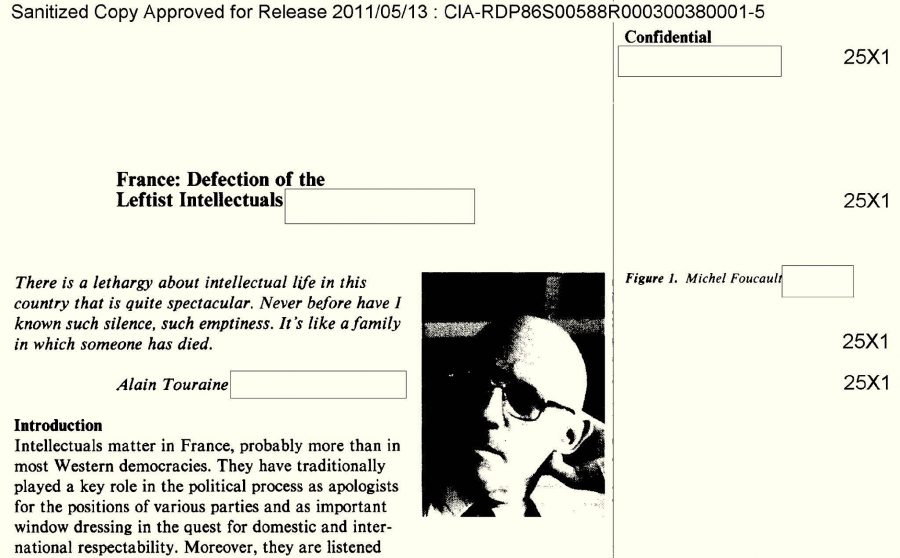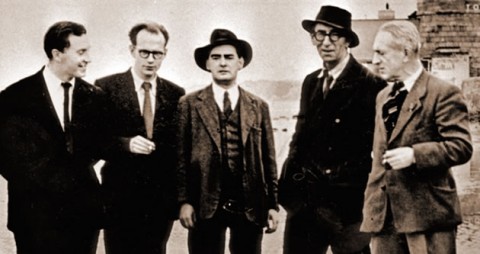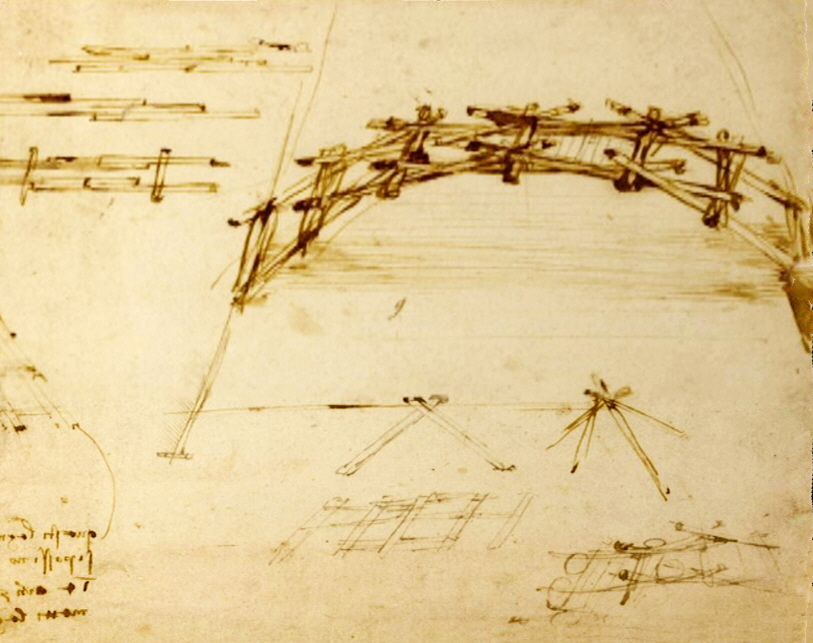One of my favorite music-themed comedy sketches of recent years features a support group of Radiohead fans flummoxed and disappointed by the band’s post-Ok Computer output. The scenario trades on the perplexity that met Radiohead’s abrupt change of musical direction with the revolutionary Kid A as well as on the fact that Radiohead fans tend toward, well… if not PTSD or severe mood disorders, at least a heightened propensity for generalized depression.
“Much of Radiohead’s music is undeniably sad,” writes Analytics Specialist and Radiohead fan Charlie Thompson. Rather than play something “less depressing,” however, as many an acquaintance has asked him over the years, Thompson decided “to quantify that sadness, concluding in a data-driven determination of their most depressing song.”
Now, purely subjectively, I’d place “How to Disappear Completely” in the top spot, followed closely by Amnesia’s “Pyramid Song.” But my own associations with these songs are personal and perhaps somewhat arbitrary. I might make a case for them based on lyrical interpretations, musical arrangement, and instrumentation. But the argument would still largely depend on matters of taste and acculturation.
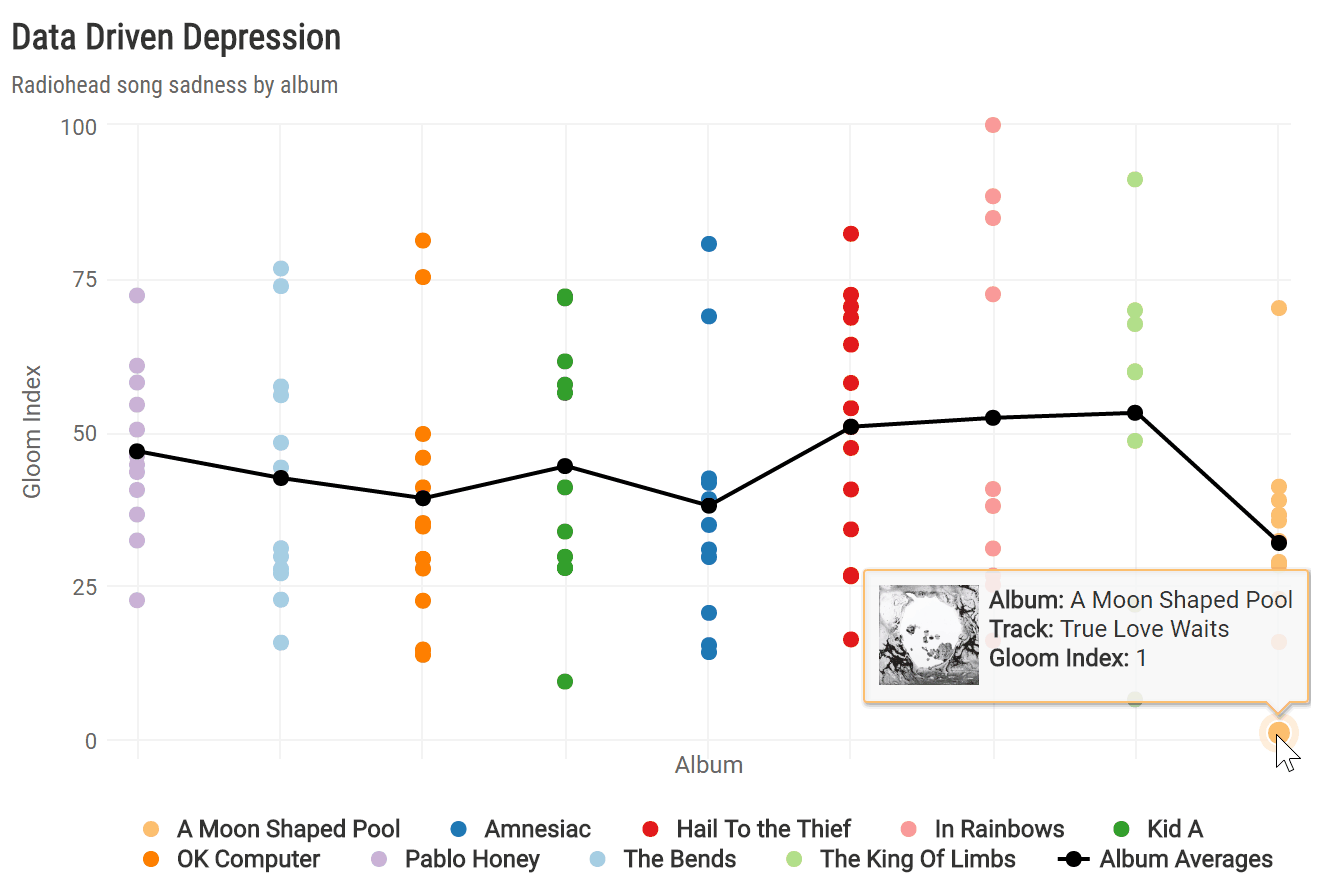
Thompson, on the other hand, believes in “quantifying sentiment.” To that end, he created a “gloom index,” which he used to measure each song in the band’s catalog. Rather than listening to them all, one after another, he relied on data from two online services, first pulling “detailed audio statistics” from Spotify’s Web API. One metric in particular, called “valence,” measures a song’s “positivity.” These scores provide an index “of how sad a song sounds from a musical perspective.” (It’s not entirely clear what the criteria are for these scores).

Next, Thompson used the Genius Lyrics API to examine “lyrical density,” specifically the concentration of “sad words” in any given song. To combine these two measures, he leaned on an analysis by a fellow data scientist and blogger, Myles Harrison. You can see his resulting formula for the “Gloom Index” above, and if you understand the programing language R, you can see examples of his analysis at his blog, RCharlie. (Read a less data-laden summary of Thompson’s study at the analytics blog Revolutions.) Thompson also plotted sadness by album, in the interactive graph further up.
So, which song rated highest on the “Gloom Scale”? Well, it’s “True Love Waits” from their most recent album A Moon Shaped Pool (hear a live acoustic version up above.). It’s a damned sad song, I’ll grant, as are the nine runners-up, all of which you can hear in the YouTube and Spotify playlists above). “Pyramid Song” appears at number 5, but “How to Disappear Completely” doesn’t even rank in the top ten. From a purely subjective standpoint, this makes me suspicious of the whole operation. But you tell us, readers, what do you think of Thompson’s experiment in “quantifying sentiment” in music?
Here’s the top 10:
1. True Love Waits
2. Give Up The Ghost
3. Motion Picture Soundtrack
4. Let Down
5. Pyramid Song
6. Exit Music (For a Film)
7. Dollars & Cents
8. High And Dry
9. Tinker Tailor Soldier …
10. Videotape
via Kottke
Related Content:
Radiohead’s “Creep” Played on the Gayageum, a Korean Instrument Dating Back to the 6th Century
A Free Course on Machine Learning & Data Science from Caltech
Josh Jones is a writer and musician based in Durham, NC. Follow him at @jdmagness

